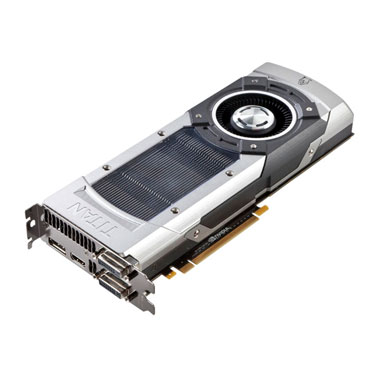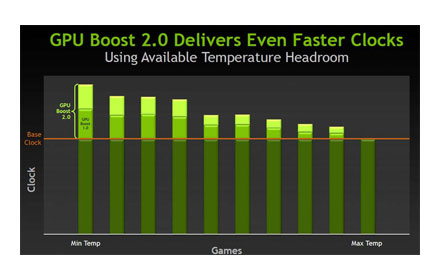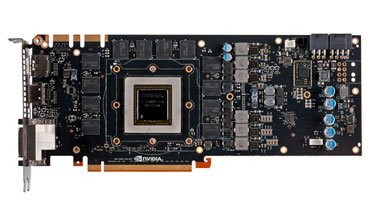Our Aim
To provide you with an overview on New And existing technologies, hopefully helping you understand the changes in the technology. Together with the overviews we hope to bring topical issues to light from a series of independent reviewers saving you the time And hassle of fact finding over the web.
We will over time provide you with quality content which you can browse and subscribe to at your leisure.
TekSpek 's

NVIDIA GeForce GTX TITAN
Date issued:
Introducing a graphics TITAN
Nvidia is on a never-ending mission to produce the world's fastest single-GPU graphics card. It already has the GeForce GTX 680 in its arsenal, but it now wants to pull out ahead of the competition with something new and unexpected.
But with no new architectures scheduled for the coming months, how does it do it? The answer lies with the company's professional graphics accelerators - Quadro and Tesla. Nvidia released the Tesla K20X back in November 2012 and it's special insofar as it uses what is known as the GK110 die - a 7.1-billion-transistor chip designed for performance above all else. Moreover, the K20X uses the current Kepler GPU structure in a very wide, parallel sense, where 2,688 cores, 6GB of memory, and a 384-bit memory bus promise top-notch potential performance. Handy for GPU Compute applications such as weather modelling and computational chemistry, this beast costs around $3,000 a pop.
Clearly superior to the GeForce GTX 680 in all performance facets, Nvidia's GeForce TITAN - a new gaming card - grabs hold of this Tesla K20X architecture with both hands, removes a few workstation-related features unnecessary to the gaming crowd, boosts the frequencies, adds some new GPU Boost love, and repurposes all of this moxie into a limited-edition card.

The design department behind the elegant looks of the twin-GPU GeForce GTX 690 has been let loose on TITAN. The two ultra-enthusiast cards share an industrial look that is beautifully engineered. An aluminium casing and polycarbonate window have been liberally pulled from GTX 690, while the larger, albeit single, vapour chamber dominates the centre. Those who liked the side lighting on the GTX 690, where the GeForce logo lights up green, will also see it in evidence here.
Measuring 10.5in long and taking up two slots, making it marginally smaller than GTX 690, an off-centre fan, 90mm in diameter, blows air across the stacked fins of the vapour chamber and out of the rear.
It's all in the numbers
It's a beast of a card, and the performance potential is best realised by comparing specifications side-by-side.
| GPU | GeForce GTX TITAN (6,144MB) | GeForce GTX 680 (2,048MB) | GeForce GTX 690 (4,096MB) | Radeon HD 7970 GHz (3,072MB) |
|---|---|---|---|---|
| DX API | 11.1 | 11.1 | 11.1 | 11.1 |
| Process | 28nm | 28nm | 28nm | 28nm |
| Transistors | 7.1bn | 3.54bn | 3.54bn x 2 | 4.3bn |
| Die Size | 520mm² | 294mm² | 294mm² x 2 | 352mm² |
| Processors | 2,688 | 1,536 | 1,536 x 2 | 2,048 |
| Texture Units | 224 | 128 | 128 x 2 | 128 |
| ROP Units | 48 | 32 | 32 x 2 | 32 |
| GPU Clock/Boost (MHz) | 837 (876) | 1,006 (1,058) | 915 (1,019) | 1,000 (1,050) |
| Shader Clock/Boost (MHz) | 837 (876) | 1,006 (1,058) | 915 (1,019) | 1,000 (1,050) |
| GFLOPS | 4,494 | 3,090 | 5,621 | 4,096 |
| Memory Clock (MHz) | 6,008 | 6,008 | 6,008 | 6,000 |
| Memory Bus (bits) | 384 | 256 | 256 x 2 | 384 |
| Max bandwidth (GB/s) | 288.4 | 192.2 | 192.2 x 2 | 288 |
| Power Connectors | 8+6 | 6+6 | 8+8 | 8+6 |
| TDP (watts) | 250 | 195 | 300 | 250 |
| GFLOPS per watt | 17.98 | 15.84 | 18.74 | 16.38 |
| MSRP | $999(£825) | $449 | $999 | $449 |
The TITAN chip packs in twice as many transistors and is almost twice as large as a premium GeForce GTX 680. TITAN's 520mm² die-size is huge by current standards but, putting it into context, around the same area as a 40nm-based GTX 580 'Fermi' GPU. Housing 75 per cent more cores, texture units and 50 per cent greater ROPs, think of it as a scaled-up GTX 680. All that front-end horsepower needs to be fed, meaning the TITAN harks back to GTX 580 and also uses a wide 384-bit bus. And designed to run at super-high resolutions that are likely to be used in conjunction with high-quality image settings, TITAN is equipped with a 6GB frame-buffer, used exclusively for the single GK110 GPU.
Though on-paper performance is scaled up by between 50-75 per cent, board power increases by less than 30 per cent over an already-frugal GTX 680. This impressive stat, helped by having lower-than-GTX 680 core clocks, enables the GK110 TITAN to be fit into a 250W thermal envelope.
Less Tesla, More GeForce
The $999 asking price appears to be prohibitive to the gamer but can also be construed as a Tesla K20X on the (relative) cheap. This fact is further substantiated by the knowledge that, just like Tesla K20X, TITAN can run double-precision compute at 1/3rd of single-precision speeds, leading to over 1TFLOPS DP throughput. However, being a gamer's card at heart, TITAN's DP rate is set to 1/24th of SP, just like GTX 680, as no games use double-precision calculations. The full 1/3rd ratio can be set via the control panel, yet doing so forces the GPU's clocks down. And no gamer wants that, right?
Nvidia ensures that those who are willing to pay for Tesla's feature-set continue to do so; TITAN doesn't feature the K20X's ECC memory, Hyper-Q and Grid Management Unit, amongst other $3,000-dollar niceties, though Dynamic Parallelism makes the cut.

A Tesla-to-TITAN makeover wouldn't be complete without Nvidia experimenting with key technologies. First brought to market with the GTX 680, GPU Boost - where the GPU automatically overclocks when there's scope to do so - is refined and released in v2.0 form for this card.
v2.0's main focus moves away from setting the GPU's frequency with reference to a desired power target. Instead, it relies on the more-dynamic temperature as the control. The GPU still jumps up on a pre-defined frequency and voltage curve, but should the chip be cool, the GPU can run faster than with GPU Boost v1.0, providing an automatic increase in performance.
Performance
Basic horsepower, pulled from the table earlier in this guide, indicates that TITAN has around 50 per cent more oomph than a GTX 680 once we've accounted for the lower core clocks. Understanding that the architecture is, for all intents and purposes, the same as GTX 680 leads us to believe that high-resolution, high IQ performance - what this card is designed for - will be between 40-60 per cent faster than said GTX 680.

Splitting it down the middle, a 50 per cent uptick clearly makes TITAN Nvidia's fastest-ever consumer GPU, especially once GPU Boost v2.0's settings have been optimised for performance.
Summary
Assuming the performance predictions hold true, TITAN is set to become the fastest single-GPU card around, beating Radeon HD 7970 GHz Edition into second place. Such an accolade commands a premium £800+ price tag, but if you think you can handle this amount of speed from a single card, the GeForce GTX TITAN can be purchased right here from Scan Computers.